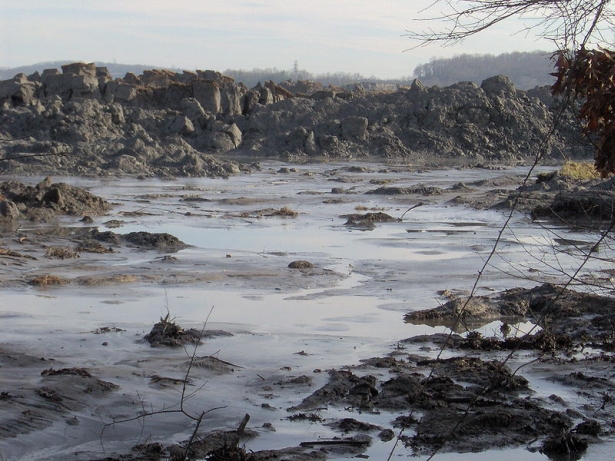 A new report from an engineering firm hired by the Tennessee Valley Authority identified factors behind last year’s disaster that unleashed more than a billion of gallons of toxic ash from a massive storage pond at the federal company’s Kingston plant in eastern Tennessee.
A new report from an engineering firm hired by the Tennessee Valley Authority identified factors behind last year’s disaster that unleashed more than a billion of gallons of toxic ash from a massive storage pond at the federal company’s Kingston plant in eastern Tennessee.
It claims that the disaster was a one-of-a-kind event — but skeptical coal ash watchdogs are calling for a more thorough investigation by federal authorities.
“This type of explanation sounds eerily familiar,” says Earthjustice attorney Lisa Evans. “When 125 people were killed in the Buffalo Creek coal slurry disaster of 1972, the coal company made the same claims, calling the event an ‘act of God’ to avoid liability, despite the fact that the dam failure was clearly caused by poorly constructed and inspected impoundments.”
Commissioned by TVA and conducted by the Los Angeles-based engineering giant AECOM, the report says that the Kingston spill was caused by a combination of factors. They include the high water content of the wet ash, the increasing height of the ash pile, the construction of sloping dikes over the wet ash, and the existence of an unusual bottom layer of slimy ash and silt.
According to TVA Chief Operating Office Bill McCollum, the combination of conditions that contributed to the disaster was “unusual.”
“No other ash pond in the TVA system was built like Kingston,” he says.
But it’s unclear whether there are other ash ponds in the United States afflicted with similar problems. Earlier this month, it came to light that the federal Environmental Protection Agency has identified 44 coal ash waste disposal sites so hazardous that if they were to fail like the one at Kingston large numbers of people could die. But while the agency has reportedly notified first responders about those hazardous sites, it is refusing to share their location with the public due to security concerns.
Evans points out that the AECOM report did not examine what role TVA’s negligence may have played in the spill. Nor does it consider whether the dumping of millions of tons of toxic coal ash in similar facilities across the country is a “recipe for disaster.”
“TVA’s self-serving version of the truth won’t suffice,” Evans says. “We need an immediate investigation by the relevant federal agencies with expertise in dam safety and hazardous substances, namely FEMA’s National Dam Safety Program and the U.S. Environmental Protection Agency.
This week marked the six-month anniversary of TVA’s disaster in eastern Tennessee’s Roane County. The incident, which occurred in the early morning hours of Dec. 22, 2008, unleashed a six-foot wall of toxic muck that completely destroyed one nearby house, left three others uninhabitable and contaminated nearby water supplies.
To date, only an estimated 3% of the spilled ash has been cleaned up. The waste was initially sent to landfills in predominantly poor and black communities in Perry County, Ala. and Taylor County, Ga. as part of a pilot test project. TVA has since announced that it plans to dispose of most of the ash at the Perry County site, the Chattanooga Times Free Press reports.
Earlier this week, a public meeting about the ash cleanup plans in Harriman, Tenn. drew protesters from Perry County, Ala. who objected to the disposal plan.
“We don’t believe that it’s right for something that toxic to be dumped on people who don’t even know it’s happening,” protester Betsy Ramaccia told WATE news.
(This story originally appeared at Facing South.)



